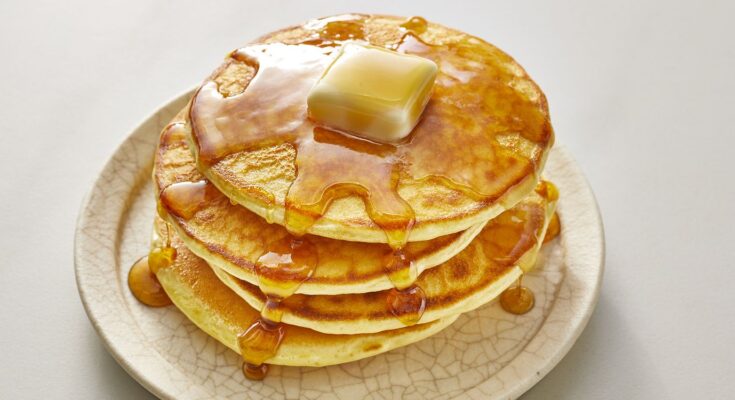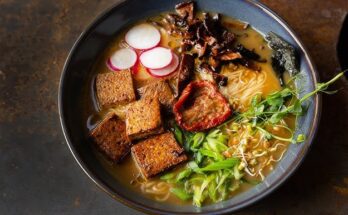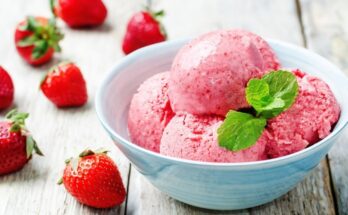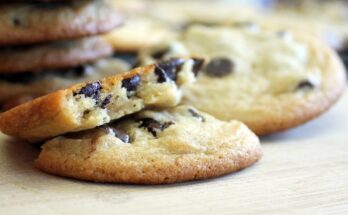Pancake Flour Recipe: Who doesn’t love waking up to the smell of pancakes sizzling on a hot griddle? There’s something comforting and nostalgic about a tall stack of fluffy pancakes dripping in syrup. But what if you could simplify your mornings by having a ready-to-go pancake flour mix on hand? This step-by-step guide shows you exactly how to make pancake flour at home—easy, customizable, and way tastier than store-bought.
What Is Pancake Flour?
Pancake flour is a pre-mixed blend of dry ingredients commonly used to make pancakes. Think of it as your own DIY Bisquick-style mix—but better. Instead of reaching for multiple jars and packets every time you want pancakes, this flour mix streamlines the process. It combines all the basics—flour, baking powder, sugar, and salt—into one convenient mix.
Not only is pancake flour incredibly easy to whip up, but it also gives you full control over what goes into your breakfast. You can adjust the sweetness, go gluten-free, or even add unique flavors. No preservatives, no unpronounceable ingredients—just pure, homemade goodness.
Why Make Pancake Flour at Home?
You might wonder, “Why not just buy it from the store?” Well, here’s the thing—most commercial pancake mixes are loaded with additives and preservatives. Plus, they often contain powdered milk and hydrogenated oils that you may want to avoid.
Making it at home is not only healthier, but also more economical. You get a fresh batch each time, tailored to your taste. Want it less sweet? Done. Need it dairy-free? No problem. Love a little cinnamon? Throw it in. This flexibility makes homemade pancake flour a game-changer for any breakfast lover.
Plus, it’s the perfect gift! Fill a mason jar with pancake mix, tie on a ribbon, and boom—an easy, thoughtful homemade present for friends and family.
Essential Ingredients for Pancake Flour
Basic Dry Ingredients
To make a basic pancake flour mix, you only need a few pantry staples:
- All-purpose flour (4 cups): This is your main base. You can also use whole wheat flour or a gluten-free blend if you prefer.
- Baking powder (3 tablespoons): This is what gives pancakes that fluffy, airy texture. It acts as a leavening agent.
- Sugar (2 tablespoons): Just a touch of sweetness to balance the flavors.
- Salt (1 teaspoon): Enhances taste and balances the sweetness.
That’s it! Just four simple ingredients and you’re halfway to pancake heaven. If you’d like, you can sift the flour first to make the mix extra light and smooth.
Optional Add-ins for Extra Flavor
Now for the fun part—customization. If you want your pancake flour to stand out, here are a few ideas for add-ins:
- Powdered buttermilk: Adds richness and tang, perfect for those who love buttermilk pancakes.
- Cinnamon or nutmeg: Warm spices give your pancakes a cozy flavor.
- Vanilla powder: Adds sweetness and a comforting aroma.
- Powdered milk: Makes the mix more filling and gives it a creamier texture.
- Chocolate chips or dried fruits: Only if you plan to use the mix soon, as these can reduce shelf life.
You can create different blends depending on who you’re serving. Kids might love a chocolate chip version, while adults may go for a cinnamon-spiced batch.
Step-by-Step Instructions to Make Pancake Flour
Step 1: Measure the Ingredients Precisely
Accuracy is everything when it comes to baking. Make sure to level off your dry ingredients with a flat edge for consistent results.
- 4 cups all-purpose flour
- 3 tablespoons baking powder
- 2 tablespoons sugar
- 1 teaspoon salt
Place each of these ingredients into a large mixing bowl. If you’re adding extras like spices or powdered buttermilk, include them now.
Step 2: Combine and Mix Thoroughly
Once your ingredients are in the bowl, it’s time to mix. Use a whisk or spoon to combine everything until the mixture looks uniform. This step is crucial—uneven distribution of baking powder or salt could ruin the final pancake texture.
If you’re making a large batch, consider using a food processor or stand mixer to save time and ensure thorough blending.
Want extra fluffy pancakes? Sift your flour and dry ingredients before mixing. This will aerate the mix and make your pancakes super soft.
Step 3: Store the Pancake Flour Properly
After mixing, transfer the pancake flour into an airtight container. Mason jars, ziplock bags, or resealable plastic containers all work well. Make sure the container is completely dry—moisture is the enemy here.
Label the jar with the date and “Pancake Flour Mix” so you don’t forget what’s inside or how long it’s been sitting there. Stored properly, this mix can last up to 3 months in a cool, dry place.
Want a longer shelf life? Freeze the mix. Just make sure it’s sealed tightly to avoid freezer burn.
Using Your Homemade Pancake Flour
Pancake Recipe Using Your Flour Mix
Now that your pancake flour mix is ready, let’s turn it into a stack of golden, fluffy pancakes. Here’s a basic recipe using 1 cup of your homemade mix:
Ingredients:
- 1 cup pancake flour mix
- 3/4 cup milk (dairy or non-dairy)
- 1 egg
- 2 tablespoons melted butter or oil
- 1 teaspoon vanilla extract (optional)
Instructions:
- In a medium bowl, whisk the egg, milk, and vanilla until combined.
- Add 1 cup of your pancake mix to the wet ingredients.
- Stir just until the batter is moistened—don’t overmix! A few lumps are totally fine.
- Heat a skillet or griddle over medium heat. Lightly grease it with butter or oil.
- Pour about 1/4 cup of batter for each pancake onto the skillet.
- Cook until bubbles form on the surface and the edges look set—about 2 minutes.
- Flip and cook the other side for another 1-2 minutes until golden brown.
- Serve hot with your favorite toppings like maple syrup, fruit, or whipped cream.
Want to spice things up? Add mashed bananas, blueberries, or even a handful of chocolate chips directly into the batter before cooking.
Tips for Fluffy and Delicious Pancakes
Pancakes can be tricky, but a few pro tips will make sure yours turn out amazing every time:
- Don’t overmix the batter: Stirring too much can make pancakes tough and chewy instead of soft and fluffy.
- Let the batter rest: Give your batter 5–10 minutes to rest before cooking. It helps the flour absorb the liquid and activates the baking powder.
- Use medium heat: High heat might burn the pancakes before they’re cooked through. Medium heat gives you that perfect golden crust.
- Flip once only: Wait until the bubbles pop and edges set before flipping. Constant flipping leads to deflated, sad pancakes.
- Keep pancakes warm: Store cooked pancakes on a baking tray in a warm oven (200°F/90°C) while you finish the batch.
Homemade pancake flour already gives you a head start, but these little techniques will take your breakfast to pro-chef level.
Storing and Shelf Life of Pancake Flour
Best Practices for Storage
Proper storage ensures your pancake flour stays fresh and ready to use for weeks—sometimes even months.
Here are some essential storage tips:
- Airtight container is key: Whether it’s a mason jar, ziplock, or sealed plastic tub, make sure it’s airtight. Oxygen and moisture are the biggest threats.
- Cool, dry environment: A pantry, kitchen cupboard, or dry shelf away from the stove or sink is ideal. Avoid humidity.
- Label clearly: Write the mix date and even a basic pancake recipe on the jar if you like. This helps you use it in time and makes things super convenient for guests or kids.
If you’re making a big batch or live in a humid area, consider storing your pancake flour in the fridge or freezer. Just bring it to room temperature before using so the baking powder activates properly.
Signs Your Flour Mix Has Gone Bad
No one wants to ruin a perfect morning with stale or spoiled pancake mix. Here are signs to watch for:
- Smell: If the flour mix smells sour, musty, or just “off,” toss it. Fresh flour should smell neutral or slightly nutty.
- Texture: If the mix feels clumpy, it might have absorbed moisture. That’s a breeding ground for mold.
- Color change: Any discoloration or dark specks could mean contamination—better safe than sorry.
- Insects: Yep, it happens. If you see webbing, bugs, or tiny larvae (especially in improperly sealed containers), throw it out immediately.
Trust your senses. If it smells or looks wrong, it probably is. Always use clean, dry utensils when scooping out the mix to avoid contamination.
Customizing Your Pancake Flour Recipe
Making It Gluten-Free
If you’re gluten-sensitive or simply prefer gluten-free options, it’s easy to modify your pancake flour recipe. Instead of all-purpose flour, use a blend of gluten-free flours such as:
- 1 cup rice flour
- 1/2 cup almond flour
- 1/2 cup oat flour
- 1 teaspoon xanthan gum (to mimic gluten’s binding power)
This combo keeps the texture light while maintaining that classic pancake flavor. You can also use pre-made gluten-free flour mixes—just ensure they contain a binder like xanthan gum or guar gum. Always double-check ingredient labels if you’re serving someone with celiac disease.
Adding Protein to the Mix
Looking to boost your breakfast with some extra protein? There are plenty of ways to power up your pancake flour:
- Whey protein powder: Add 1/4 to 1/2 cup to your mix. It’s great for fitness enthusiasts or growing kids.
- Powdered peanut butter: Adds both flavor and protein with fewer calories than regular peanut butter.
- Chia seeds or flax meal: These give a nutritional punch with omega-3s and fiber.
- Greek yogurt or cottage cheese (in the batter): Replace part of the milk with yogurt when mixing the batter for extra creaminess and protein.
Protein-packed pancakes aren’t just tasty—they also keep you full longer, making them perfect for busy mornings.
Fun Variations of Pancakes Using Your Flour
Chocolate Chip Pancakes
To make chocolate chip pancakes, simply stir in 1/2 cup mini chocolate chips into the batter right before cooking. The key is using mini chips—they melt evenly and give every bite a gooey surprise.
For added decadence, serve with whipped cream and a drizzle of chocolate syrup. Kids will love these, and they make a fun weekend treat.
Blueberry or Banana Pancakes
Blueberries and bananas both bring natural sweetness and moisture to pancakes.
- For blueberries: Use fresh or frozen. If frozen, don’t thaw them—just toss them directly into the batter.
- For bananas: Mash one ripe banana and mix it into your batter along with a pinch of cinnamon.
These variations not only taste amazing but also add nutrients like potassium and antioxidants.
Creative Ways to Use Pancake Flour Mix
Waffles
Yes, your pancake flour can do double duty! To make waffles, simply reduce the liquid in your pancake recipe by about 2 tablespoons and increase the fat (butter or oil) by 1 tablespoon. The result? Crisp, golden waffles with soft centers.
Pour the batter into a hot waffle iron, cook until the outside is golden and the inside is fluffy. Serve with fruit, whipped cream, or even fried chicken for a savory twist.
Muffins and Baked Treats
Pancake flour isn’t just for pancakes. It can be used in a variety of baked goods:
- Muffins: Combine 2 cups pancake mix with 1/2 cup milk, 1 egg, and 1/2 cup of sugar. Add blueberries or chocolate chips, then bake at 350°F for 18-22 minutes.
- Quick bread: Think banana or pumpkin bread! Substitute the flour in your favorite recipe with pancake mix and tweak the leavening if needed.
- Coffee cake: Use the pancake flour base, mix in cinnamon, sugar, and a crumb topping. Voila—brunch is ready!
Having pancake flour on hand opens the door to endless creativity in the kitchen.
FAQs about Pancake Flour Recipe
1. Can I make vegan pancake flour?
Yes! Just skip any powdered dairy ingredients. When making the batter, replace milk with a plant-based version and use a flax egg or applesauce as an egg substitute.
2. How long does homemade pancake flour last?
Stored in an airtight container in a cool, dry place, it can last up to 3 months. For longer storage, freeze it.
3. Can I double or triple the pancake flour recipe?
Absolutely. Just make sure you maintain the correct ratios, and store each batch in its own container to avoid clumping.
4. Is there a way to make the mix sugar-free?
Yes! Simply leave out the sugar or use a sugar substitute like stevia or monk fruit powder.
5. What should I do if my pancakes turn out flat?
Flat pancakes usually mean your baking powder is old or the batter was overmixed. Always use fresh leavening and mix just until combined.
Conclusion
Homemade pancake flour is a simple yet powerful kitchen hack. It saves time, reduces waste, and gives you total control over your ingredients. Whether you’re making a batch of fluffy pancakes, protein-packed breakfast treats, or turning the mix into baked goodies, this flour mix will become a staple in your pantry.
You don’t have to be a chef to pull this off—just a few minutes of prep, and you’re ready for countless delicious breakfasts. So go ahead, mix up a batch, store it right, and start your mornings the right way—with pancakes that are 100% made by you.



